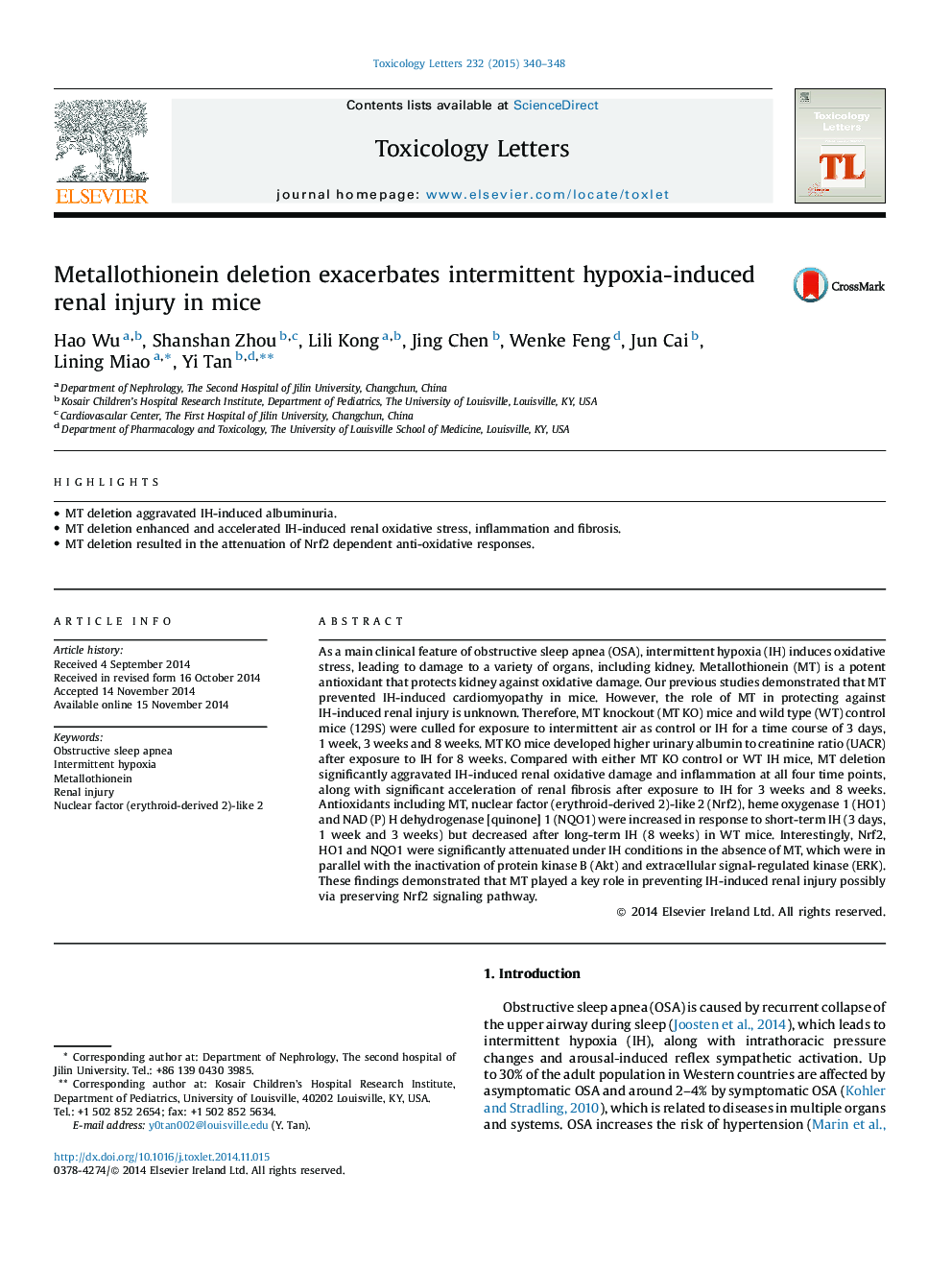| Article ID | Journal | Published Year | Pages | File Type |
|---|---|---|---|---|
| 5859975 | Toxicology Letters | 2015 | 9 Pages |
Abstract
As a main clinical feature of obstructive sleep apnea (OSA), intermittent hypoxia (IH) induces oxidative stress, leading to damage to a variety of organs, including kidney. Metallothionein (MT) is a potent antioxidant that protects kidney against oxidative damage. Our previous studies demonstrated that MT prevented IH-induced cardiomyopathy in mice. However, the role of MT in protecting against IH-induced renal injury is unknown. Therefore, MT knockout (MT KO) mice and wild type (WT) control mice (129S) were culled for exposure to intermittent air as control or IH for a time course of 3 days, 1 week, 3 weeks and 8 weeks. MT KO mice developed higher urinary albumin to creatinine ratio (UACR) after exposure to IH for 8 weeks. Compared with either MT KO control or WT IH mice, MT deletion significantly aggravated IH-induced renal oxidative damage and inflammation at all four time points, along with significant acceleration of renal fibrosis after exposure to IH for 3 weeks and 8 weeks. Antioxidants including MT, nuclear factor (erythroid-derived 2)-like 2 (Nrf2), heme oxygenase 1 (HO1) and NAD (P) H dehydrogenase [quinone] 1 (NQO1) were increased in response to short-term IH (3 days, 1 week and 3 weeks) but decreased after long-term IH (8 weeks) in WT mice. Interestingly, Nrf2, HO1 and NQO1 were significantly attenuated under IH conditions in the absence of MT, which were in parallel with the inactivation of protein kinase B (Akt) and extracellular signal-regulated kinase (ERK). These findings demonstrated that MT played a key role in preventing IH-induced renal injury possibly via preserving Nrf2 signaling pathway.
Keywords
Related Topics
Life Sciences
Environmental Science
Health, Toxicology and Mutagenesis
Authors
Hao Wu, Shanshan Zhou, Lili Kong, Jing Chen, Wenke Feng, Jun Cai, Lining Miao, Yi Tan,
